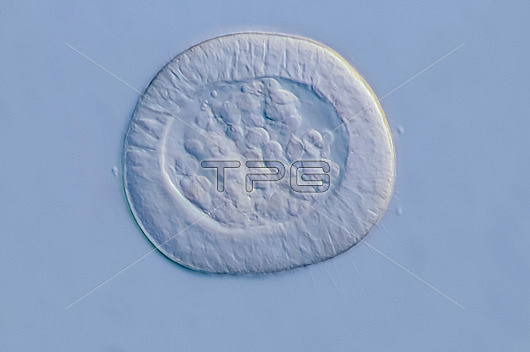
Blastula stage sea urchin (Paracentrotus lividus) embryo, light micrograph. In the sea urchin, fertilisation of an ovum (egg) by a spermatozoon is rapidly followed by division of the fertilised egg cell, resulting in the formation of an embryo. This passes through several characteristic embryonic stages (morula, blastula and gastrula), culminating in a highly characteristic pyramid-shaped larva: the pluteus larva. After a few weeks development, during which its morphology becomes more complex (multiplication of calcareous spicules, arms, appearance of a rudiment, etc.), it undergoes metamorphosis, giving rise to a miniature sea urchin. Its growth and development will take a few more years before it is fully grown and able to procreate. Magnification: x450 when printed at 10 centimetres wide.
| px | px | dpi | = | cm | x | cm | = | MB |
Details
Creative#:
TOP30268420
Source:
達志影像
Authorization Type:
RM
Release Information:
須由TPG 完整授權
Model Release:
N/A
Property Release:
N/A
Right to Privacy:
No
Same folder images:

 Loading
Loading